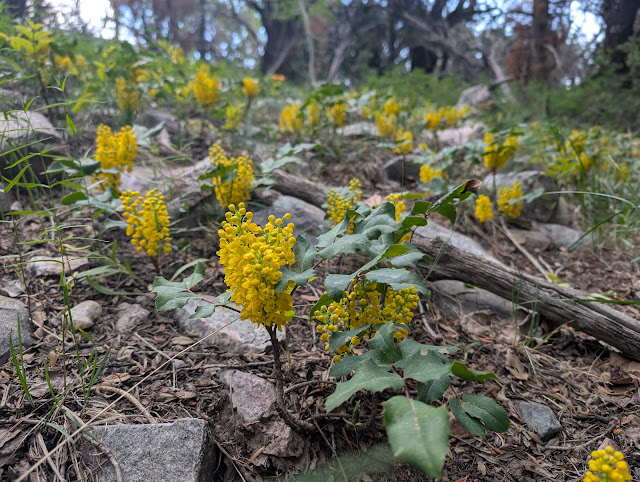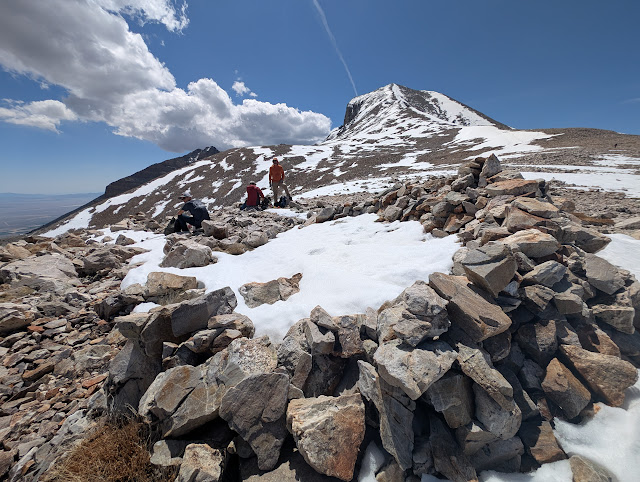We chose to go up the steeper Timber Creek side. There are some switchbacks, but we still had to take a number of breathing breaks.
On this late May trip, the aspens were just leafing out near the top.
We stopped for a selfie once we felt like we were in a safe place.
This trail is so picturesque!
We fortunately had a final wow--a yellow-bellied marmot!
Just a couple weeks later, I was up in the lower meadow (Baker-South Fork Baker loop, also a lovely hike), and the meadow was full of shooting stars!
A couple weeks after that, it was time to do the Timber-South Fork Baker loop again. This time we had blue skies, no thunderstorms in the upper meadow. We had nice views of the backside of Wheeler Peak and Doso Doyabi. 
We also enjoyed seeing some very different flowers, like this Rocky Mountain columbine.
In the lower meadow, most of the shooting stars had dimmed, but the bistort was going strong.

One of the first things to look for to determine if it's a bumble bee (vs. some other kind of bee or a fly mimic) is the pollen sac on the back leg. And it's really hairy, which is another feature off bumble bees. This lady has a huge yellow one! Then you look at the pattern of the tergites (6 back segments on the abdomen (remember head-thorax-abdomen as the three main body parts of an insect)). This one has some notable orange.

You can upload photos to iNaturalist for guesses on identifications, as well as the Bumble Bee Atlas.
We spent quite a lot of time with the bees. Then we walked, and I challenged Desert Girl to find an orchid. What?! An orchid in the Great Basin desert? Well, it doesn't grow in dry areas, it certainly likes wet spots and it's rather small, but it's still an orchid.

Isn't it a beauty?
Hopefully I'll get to hike this trail a couple more times this year and see what other changes I notice. While it's fun to hike new trails to see what's there, it's also great to repeat some faves to see how they change through the seasons.





























































